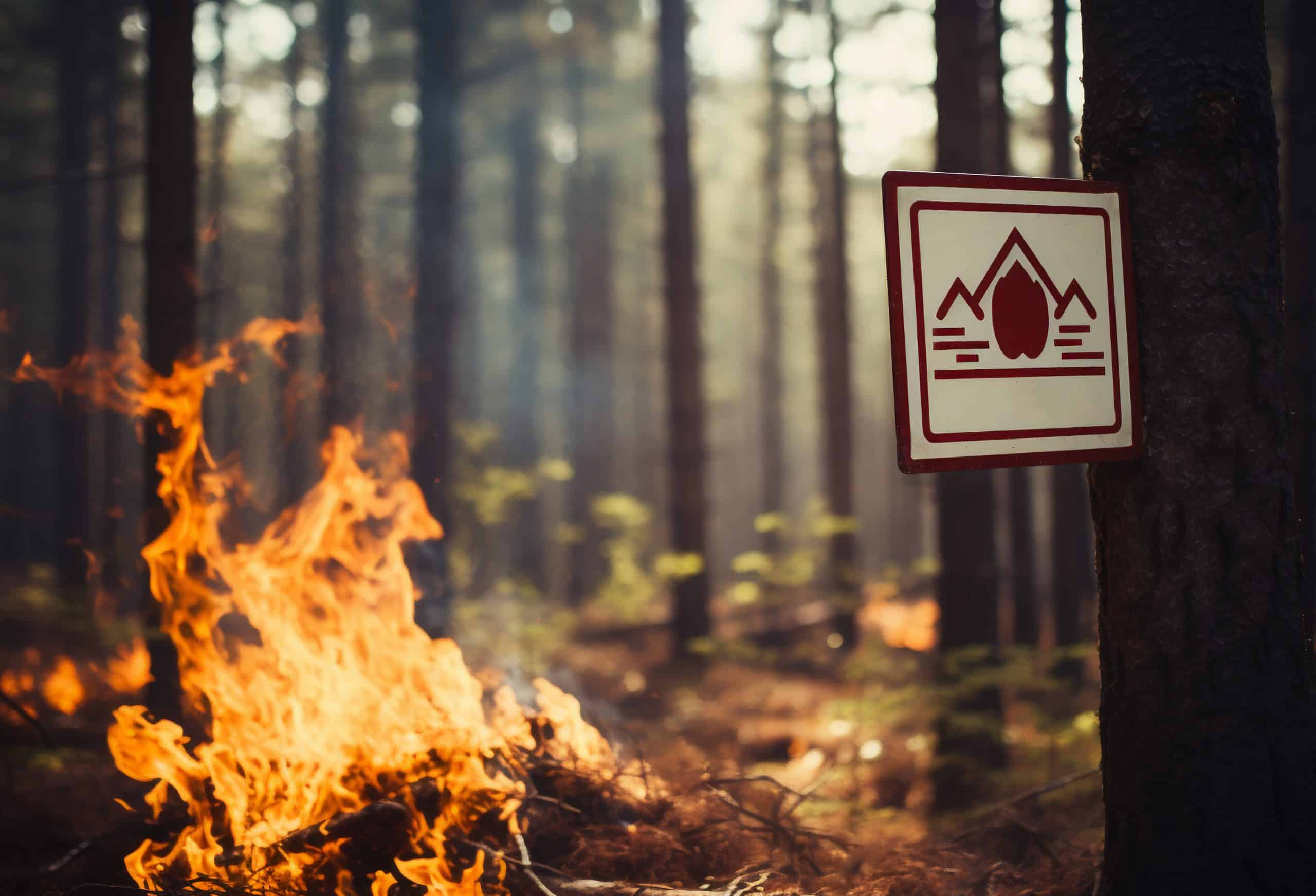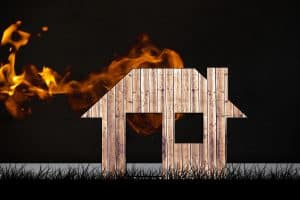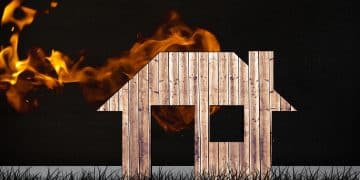California–Oregon wildfire evacuations 2025


California–Oregon wildfire evacuations significantly impact communities by destroying homes, jeopardizing air quality, and leading to long-term economic challenges, requiring collective recovery efforts and robust preparation strategies.
California–Oregon wildfire evacuations are a serious concern as hot weather and dry conditions increase fire risks. Have you ever wondered what steps you should take if an evacuation notice arises?
Let’s explore essential strategies to stay safe.
Understanding the wildfire evacuation process
Understanding the wildfire evacuation process is crucial for staying safe during emergencies. Knowing what to expect can help you act quickly when the time comes. Evacuations are often ordered due to the rapidly changing nature of wildfires.
The best way to prepare is to learn the steps involved in the process.
What to Expect During an Evacuation
When a wildfire is threatening your area, local authorities typically issue evacuation orders. These may vary in urgency based on the fire’s location and intensity. Here are key steps you may encounter:
- Notification through emergency alerts
- Clear guidance on evacuation routes
- Support from emergency services
- Information on temporary shelters
As the situation develops, it is essential to stay informed through local news or emergency services. Communication channels will provide real-time updates about the fire’s status and evacuation procedures.
Preparations for Evacuation
Being prepared can make a difference in how quickly and safely you can leave. Create an evacuation plan that includes:
- A checklist of important items
- Your preferred escape route
- Contact information for family and friends
Having these details ready ensures you minimize panic and can evacuate efficiently. Think about where you would go and how you will get there before an evacuation order is issued.
During the evacuation, heed all instructions from emergency personnel. This can include road closures and timing for leaving your home. Following these guidelines ensures not only your safety but also the safety of first responders.
Post-Evacuation Actions
Once you’ve evacuated, keeping track of the ongoing situation is necessary. After the fire has passed, authorities will assess the area to determine when it is safe to return. Be aware of potential hazards in your environment.
Stay tuned to local notifications for guidance on when it is safe to go home.
In summary, understanding the wildfire evacuation process helps individuals and families react swiftly and safely during emergencies. Preparation, awareness, and following expert advice can make all the difference.
How to prepare for a wildfire evacuation
Preparing for a wildfire evacuation is essential for ensuring your safety and that of your loved ones.
Knowing what to do ahead of time can save lives and make the process less stressful. Consider creating a plan that outlines the steps you should take when an evacuation notice is issued.
Create an Evacuation Plan
Having a clear evacuation plan is vital. This plan should include:
- Designated meeting places
- Routes to take to safety
- Contact information for family and friends
By establishing these details in advance, everyone in your household will know what to do and where to go, reducing confusion during an emergency.
Prepare an Emergency Kit
It’s important to have an emergency kit ready before you need to evacuate. This kit should contain essential items, such as:
- Water and non-perishable food
- First aid supplies
- Prescription medications
- Personal identification and important documents
Check your kit regularly to ensure everything is up to date. Having an emergency kit can make a big difference when you need to evacuate quickly.
Another key component of preparation is staying informed. Sign up for local alerts and warnings about wildfires. Knowing what conditions are like in your area can help you react faster when you hear about a potential fire.
Make sure your phone settings allow notifications from emergency services.
Practice Your Plan
Once your evacuation plan is in place, practice it with your family. Conducting drills will help everyone understand their roles and responsibilities during an evacuation.
This practice can reduce anxiety and improve your response time when faced with an actual emergency.
Finally, be ready to adapt your plan. Conditions can change rapidly during a wildfire. Being flexible and prepared for different scenarios will help you stay safe and make the right choices under pressure.
Local resources for evacuation assistance

When faced with a wildfire evacuation, utilizing local resources for evacuation assistance can be crucial for your safety and well-being.
Many communities offer various services designed to help residents navigate the challenges of evacuating during a crisis.
Emergency Services and Hotlines
Your first step should be to contact local emergency services. Fire departments and police stations are equipped to provide important information.
They can direct you to safe evacuation routes and shelters. Additionally, many areas have hotlines set up specifically for emergencies. These hotlines can give real-time updates on evacuation statuses and safety tips.
Shelters and Temporary Housing
During an evacuation, communities often set up shelters. These can be found in schools, community centers, or places of worship. Shelters provide a safe place to stay, along with food and essential services.
It’s important to check local news sources for locations of these shelters when an evacuation is announced.
- Find shelters through local authorities or social media updates.
- Consider bringing personal items for comfort, like blankets or pillows.
- Check whether shelters allow pets, as some do.
In addition to shelters, some hotels and motels may offer discounts for evacuees. It’s wise to call ahead and confirm availability.
Community Support Services
Many organizations in the community are ready to help. Local nonprofits and volunteer groups often provide assistance, including transportation for those unable to evacuate themselves.
Reach out to community centers or local charities to find out what resources are available.
Don’t forget about your neighbors, too. Often, neighbors can help each other by sharing resources or providing rides. An awareness of who lives nearby and their situations can help create a strong support system.
Staying informed about local resources is key during a wildfire evacuation. Keeping an eye on social media and local news can help ensure you’re aware of the assistance that’s available.
Staying informed during evacuations
Staying informed during evacuations is vital for ensuring your safety and well-being. When wildfires threaten your area, having access to the right information can make a significant difference.
You need to know how to get updates and understand the situation around you.
Utilize Emergency Alerts
Local authorities often issue emergency alerts via text messages or apps. Make sure you are signed up for these alerts to receive real-time information about evacuation orders and the status of the fire. Alerts will provide critical details on:
- Evacuation routes and times
- Updates on the wildfire’s progression
- Locations of shelters
Check your phone settings to ensure that notifications are enabled, so you don’t miss these crucial updates.
Monitor Local News and Social Media
Watching local news channels and following their social media accounts can provide live updates about the fire and evacuation procedures. News outlets often relay information from officials and offer tips on safety.
Social media can also be a valuable source for recent developments, as community members share their experiences and observations.
Consider joining community groups on platforms like Facebook or Twitter where residents discuss and share evacuation news. This can help keep you connected to your community while staying informed.
Connect with Emergency Services
Don’t hesitate to reach out to local fire departments or emergency services for information. They can provide updates on the situation and guidance on what to do next. Develop a list of important contact numbers, including:
- Your local fire department
- Community emergency numbers
- Shelters and evacuation centers
Building these connections can offer peace of mind and direct assistance during stressful times.
In summary, staying informed during evacuations is essential for making safe choices. By utilizing alerts, monitoring news, and connecting with local services, you can navigate through the crisis more effectively.
Always prioritize reliable sources of information to ensure your safety and the safety of your family.
The impact of wildfires on communities

The impact of wildfires on communities can be devastating and long-lasting. When a wildfire strikes, it affects not only the natural environment but also the lives of residents, businesses, and local economies.
Understanding these effects is crucial for planning and recovery efforts.
Destruction of Property and Infrastructure
One of the most immediate impacts of wildfires is the loss of homes and businesses. Hundreds or thousands of structures can be destroyed in a single incident. This destruction displaces families and disrupts lives.
Rebuilding can take years, creating a long-term challenge for affected communities.
Health Risks and Air Quality Issues
Wildfires contribute to poor air quality due to smoke and pollutants. This can cause respiratory problems for residents, particularly affecting children and the elderly. Staying informed about air quality levels during a wildfire is important.
People may need to stay indoors, reduce physical activity, and use masks to protect themselves from smoke inhalation.
Economic Consequences
Local economies can suffer significantly due to wildfires. The tourism industry, for instance, often takes a hit when attractions are damaged or when people avoid affected areas. Businesses might close temporarily or permanently, leading to job losses. Communities face reduced tax revenues, which can impact essential services like schools and public safety.
- Short-term loss of business income
- Long-term economic recovery challenges
- Increased costs for emergency services
Residents also face rising costs for living and rebuilding, which can further strain their resources.
Emotional and Psychological Effects
The emotional toll of wildfires is often overlooked. Survivors may experience anxiety, depression, or post-traumatic stress disorder (PTSD).
The fear of future fires can create a sense of uncertainty and worry. Community support systems, including mental health services, become essential in helping individuals cope with these challenges.
In summary, the impact of wildfires on communities goes beyond the immediate destruction. Understanding the range of effects, including property damage, health risks, economic challenges, and emotional impacts, can help in both response and recovery efforts.
As communities face these difficult circumstances, resilience and support become crucial for rebuilding and healing.
Conclusion
California–Oregon wildfire evacuations underscore the reality that wildfires are not just natural disasters, they are community crises that demand preparation, resilience, and collective action.
From property loss to health risks and long-term economic challenges, the stakes for residents are incredibly high. Effective planning, community engagement, and access to accurate information are the cornerstones of safety and recovery.
To stay ahead of these risks, residents must not only prepare evacuation plans and emergency kits but also rely on trusted sources for real-time updates and official instructions.
Resources like Oregon’s official evacuation guidance help residents understand routes and procedures, while national coverage, such as CNN’s report on recent California–Oregon evacuations, highlights the urgency of acting swiftly when orders are issued.
Ultimately, the impact of these evacuations serves as a powerful reminder that wildfires demand both immediate response and long-term planning.
By combining preparedness with reliable information, communities can strengthen their resilience, protect lives, and recover more effectively in the face of escalating fire threats.
FAQ – Frequently Asked Questions About Wildfires and Community Impact
What are the immediate effects of wildfires on communities?
The immediate effects include destruction of homes and businesses, loss of property, and displacement of families.
How do wildfires affect air quality?
Wildfires produce smoke and pollutants that can lead to respiratory problems and deteriorate air quality significantly.
What economic challenges do communities face after a wildfire?
Communities may experience loss of business income, decreased tourism, and increased costs for emergency services.
How can communities support each other during wildfire recovery?
Communities can support each other by providing emotional support, sharing resources, and collaborating on recovery efforts.
Liked the article?





